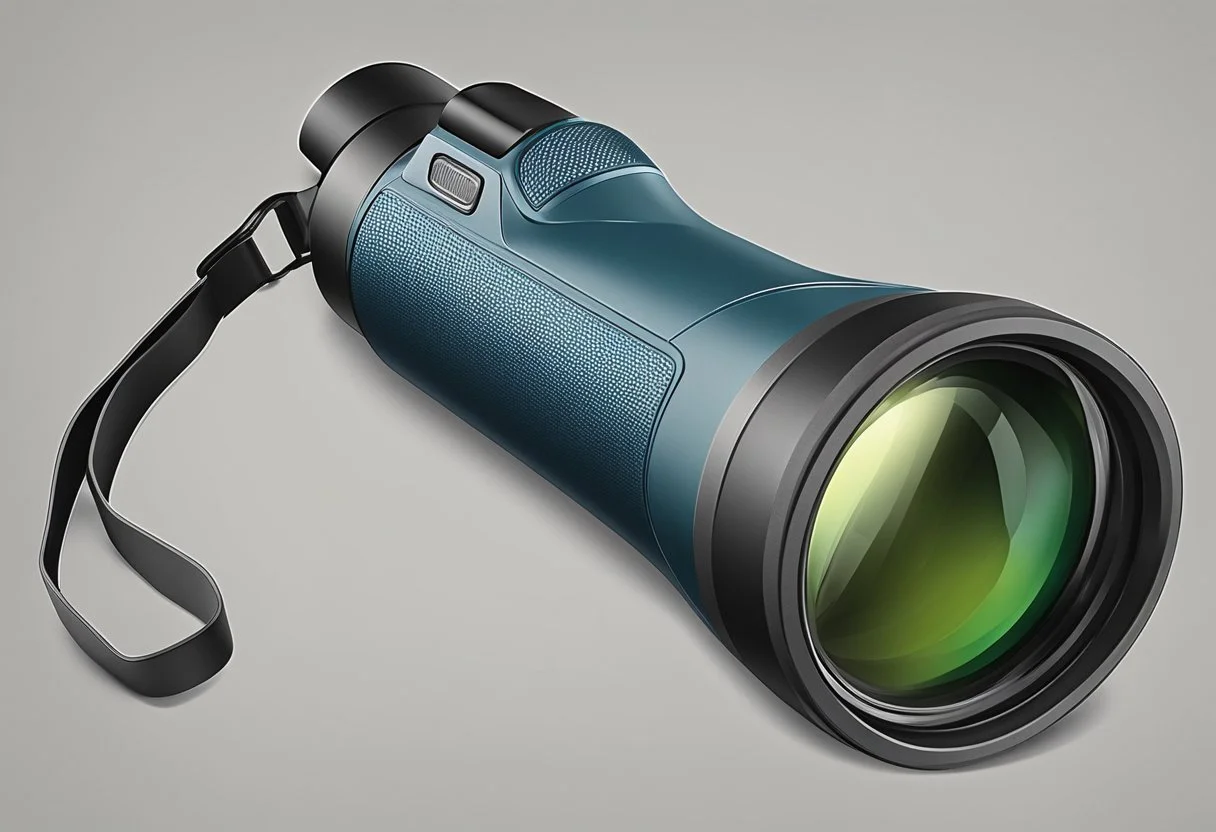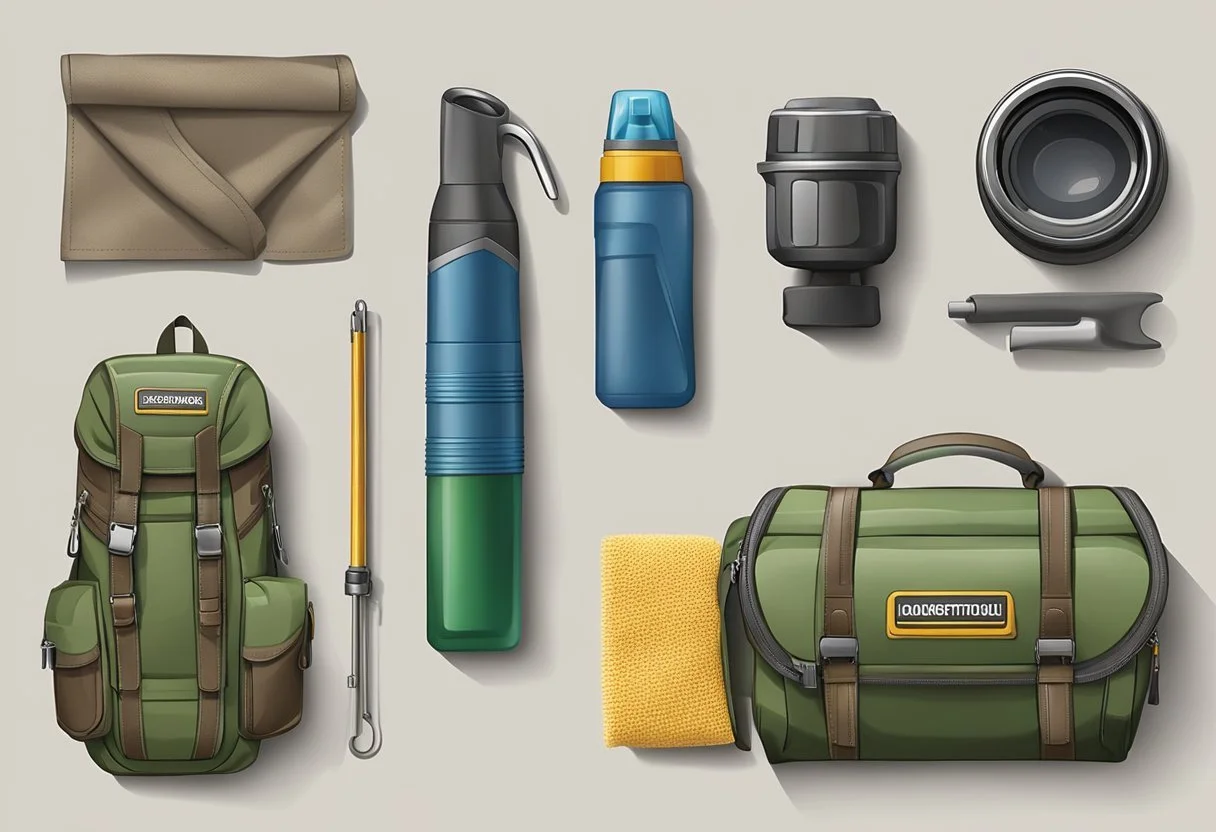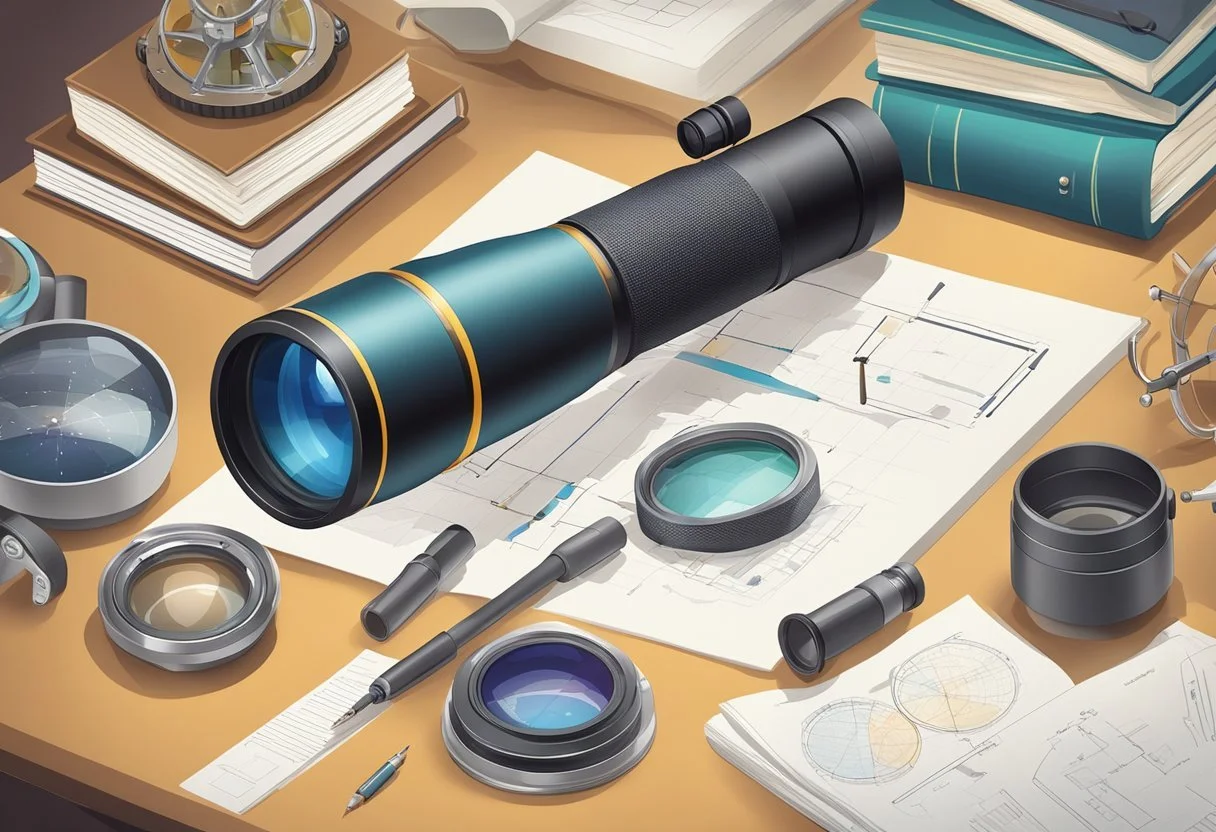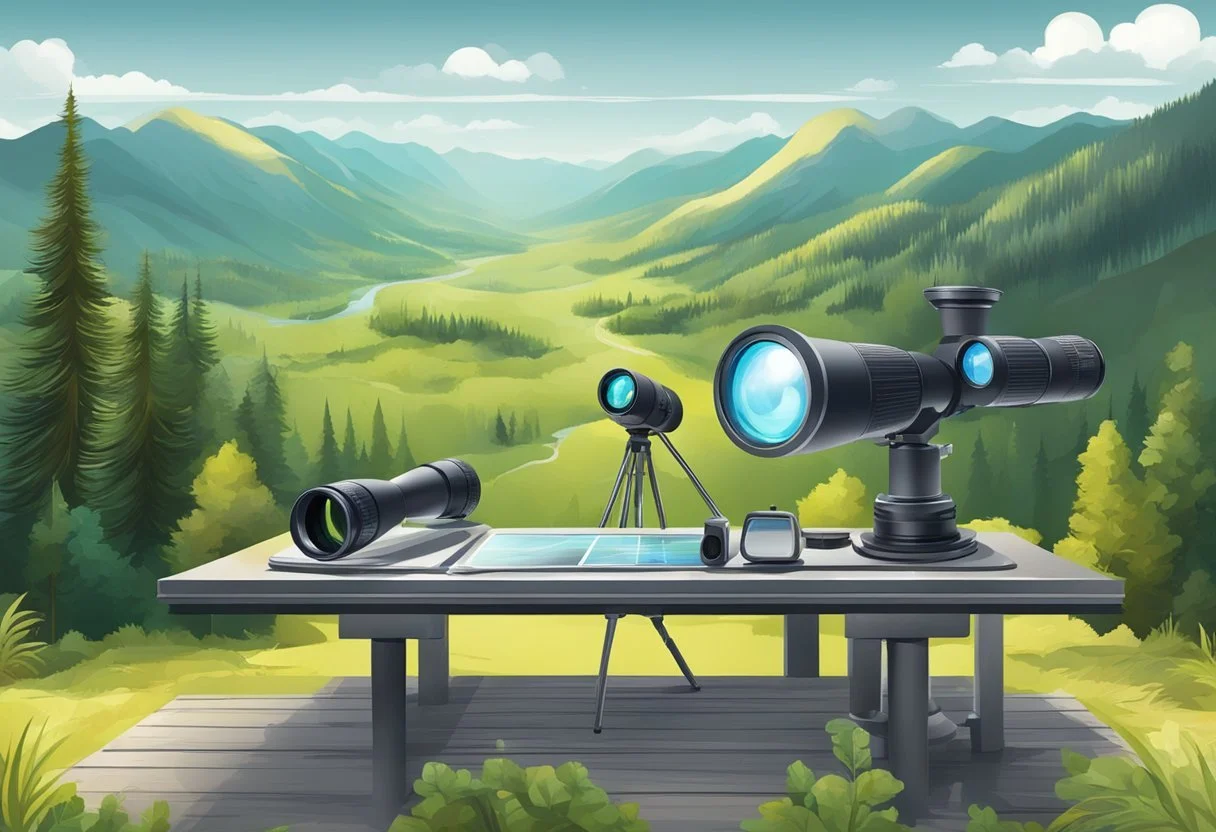Best Monoculars
Top Picks and Expert Buying Guide
Discover > Hunting Gear > Best Monoculars
Monoculars have been gaining significant popularity among outdoor enthusiasts, bird watchers, and event spectators, as these powerful and compact devices maximize viewing experiences. This article will delve into the best monoculars available on the market, unveiling the features that make them stand out among the competition. Whether you're a professional or a hobbyist, equipping yourself with the right monocular could elevate your viewing experiences to a whole new level.
When searching for the best monocular, factors such as magnification, objective lens size, field of view, build quality, and overall ease of use must be considered. These elements will greatly influence the quality of the images you see, as well as how comfortably you can use the monocular during lengthy observations. The best monoculars strike an optimal balance between these specifications, allowing users to have sharp and bright images regardless of the viewing distance.
In this article, we have carefully curated a selection of monoculars that exhibit exceptional performance and adaptability for various viewing scenarios. We will provide a comprehensive analysis of their features, advantages, and drawbacks, equipping you with the knowledge to determine the best monocular for your specific needs. Get ready to elevate your viewing experience with the top monocular choices in today's market.
The Basics of Monoculars
What is a Monocular?
A monocular is a compact, lightweight optical device used to view distant objects with one eye. It works similarly to a telescope or a pair of binoculars but is specifically designed for single-eye use. Monoculars have various features and specifications, making them suitable for a range of activities such as birdwatching, hunting, and sporting events.
Monocular vs. Binoculars
Monoculars and binoculars both offer magnification and improved viewing distances but have distinct differences:
Size and Weight: Monoculars are typically smaller and lighter than binoculars, making them ideal for people who value portability and ease of use.
Ease of Use: Because monoculars only require the use of one eye, they can be more comfortable for some users, especially for those with eye conditions or impaired vision.
Field of View: Binoculars generally provide a wider field of view than monoculars, so if a broader perspective is crucial, binoculars may be a better choice.
Price: Monoculars are usually more affordable than binoculars, making them a cost-effective option for those on a budget.
Understanding Magnification and Objective Lens
When choosing a monocular, understanding magnification and objective lens sizes is crucial. These two factors determine the device's performance in terms of image clarity, brightness, and detail.
Magnification refers to how much closer an object appears when viewed through the monocular. It is expressed as a number followed by an "x," denoting the number of times closer the object appears. For example, a 10x monocular makes objects appear 10 times closer than they would with the naked eye.
Objective Lens size refers to the diameter of the front lens of the monocular, which influences the amount of light gathered and ultimately affects image quality. A larger lens size allows more light to enter, resulting in a brighter and clearer image, especially in low-light conditions. Objective lens sizes are typically measured in millimeters (mm).
Keep in mind that higher magnification often leads to a narrower field of view and may result in a shakier image due to hand movement. Larger objective lenses also increase the size and weight of the monocular, potentially affecting portability.
Key Features to Consider
Field of View Explained
The field of view refers to the width of the area one can observe through a monocular. In essence, a wider field of view enables users to monitor larger sections of their surroundings. It is expressed in feet at 1,000 yards or degrees. However, a trade-off exists between magnification and field of view, as higher magnification generally results in a narrower field of view.
Importance of Eye Relief
Eye relief, the distance between the user's eye and the eyepiece of the monocular, is another crucial factor to consider. Longer eye relief offers a comfortable viewing experience, particularly for eyeglass wearers, as it prevents the eye from pressing against the monocular. As a rule of thumb, people wearing glasses should opt for a monocular with an eye relief of at least 14mm.
Understanding Optics Quality
Optics quality plays a significant role in the overall performance of a monocular. Features that indicate superior optics quality include:
Extra-low Dispersion (ED) optics: These lenses minimize chromatic aberration, resulting in a sharper, clearer image.
Prism type: The two primary prism types are roof and Porro prisms. Roof prisms are compact and lightweight, while Porro prisms offer better depth perception and a wide field of view.
Lens coatings: Manufacturers apply various coatings to lenses to enhance light transmission, minimize glare, and improve image clarity. Multiple-layer and fully multi-coated lenses provide the best performance.
Design and Build Factors
Several design and build factors can influence the usability and durability of a monocular. These include:
Weight: Lightweight monoculars are more comfortable to hold and carry during long periods of observation. However, heavier designs may ensure better durability and increased stability during use.
Eyecup: Adjustable eyecups accommodate users with or without glasses while providing a comfortable viewing experience. Twist-up eyecups are particularly convenient, as they can cater to an individual's needs.
Objective lens size: A larger objective lens size allows for increased light transmission, providing brighter images in low light conditions. However, larger lenses also contribute to a heavier and bulkier monocular.
Durability: A rugged design, often including rubber armor, promotes durability and protects the monocular from potential damage. Additionally, water and fog-proofing are essential features to consider, especially for outdoor activities.
Form factor: Compact and ergonomic designs are easier to handle and carry, making them ideal for activities such as hiking and birdwatching.
Best Practices for Use
Tips for Bird Watching
Bird watching is a fascinating hobby, and using a monocular can greatly enhance your viewing experience. Here are some tips to help you get the most out of your monocular for bird watching:
Choose the right magnification: Opt for a monocular with a magnification between 7x and 12x for the best birding experience. Higher magnifications may be harder to stabilize and can limit the field of view.
Use a steady grip: Hold your monocular with a steady grip to minimize shaking and get a clearer image. You can also use a tripod or a monopod for extra stability.
Adjust the focus: Use the focus wheel or ring to obtain sharp images of the birds. This might require some practice, but it will improve your viewing experience.
Guidelines for Hunting with a Monocular
A monocular can be a valuable tool for hunters, allowing them to spot prey from a distance. Here are some guidelines for using a monocular while hunting:
Check the legality: Make sure it is legal to use a monocular in your hunting area, as some locations have restrictions on optical devices.
Choose an appropriate monocular: For hunting, select a monocular with a higher magnification (10x to 12x) for spotting details and a large objective lens (at least 40mm) for adequate light collection.
Scan the area: Use your monocular to scan the terrain methodically while hunting to spot potential targets and avoid missing anything important.
Stargazing with Monoculars
While monoculars may not be the first choice for stargazing, they can still be used to observe celestial objects. Here are some tips for stargazing with monoculars:
Choose a monocular with a large objective lens: A large objective lens (50mm or more) will gather more light, making it easier to observe fainter celestial objects.
Use a tripod: Stabilize your monocular on a tripod to reduce shaking when observing the night sky.
Find a dark location: Ensure that you are stargazing from a location away from city lights to have the best viewing experience.
Observing Wildlife
Observing wildlife can be a thrilling experience, and a monocular can be a helpful tool for getting closer to nature. Here are some tips for using a monocular for wildlife observation:
Choose a monocular with a good field of view: A wide field of view will help you locate and track wildlife more easily.
Be patient: Wildlife may be wary of humans, so take your time and quietly observe your surroundings to increase your chances of spotting animals.
Use a steady grip or tripod: A shaky image can make it difficult to observe wildlife clearly. Use a steady grip or a tripod for a better viewing experience.
Top Monoculars on the Market
Best Overall Monoculars
When it comes to the best overall monoculars on the market, Bushnell Legend Ultra HD and Leica Monovid stand out as top contenders. These monoculars combine excellent optics, build quality, and ease of use, making them perfect choices for both casual and professional users.
Bushnell Legend Ultra HD: This monocular offers 10x magnification with a 42mm objective lens, ensuring bright and crisp images. With its fully multi-coated optics and ED (Extra-low Dispersion) glass, the Bushnell Legend Ultra HD provides exceptional clarity and color accuracy.
Leica Monovid: Known for its unparalleled optics and image quality, the Leica Monovid comes with 8x magnification and a 20mm objective lens. This monocular features Leica's AquaDura® coating, which protects the lens from water and dirt, making it suitable for various weather conditions.
Best Budget Monoculars
For those looking for a more budget-friendly option, the Vortex Optics Solo and Bushnell Legend series offer great value without compromising on quality.
Vortex Optics Solo: Available at an affordable price, the Vortex Optics Solo provides an 8x magnification with a 25mm objective lens. Its fully multi-coated glass surfaces ensure bright and clear images, making it a fantastic choice for hobbyists or occasional users.
Bushnell Legend: As part of the well-known Bushnell brand, the Legend series offers excellent quality monoculars at a budget-friendly price point. With various models to choose from, you can find the perfect balance of magnification, lens size, and features to suit your needs.
Best Monoculars for Specific Uses
Lastly, let's take a look at some specialized monoculars that cater to specific uses:
Night Vision Monoculars: These monoculars are designed to provide clear images even in low light conditions. Although not typically used by casual users, they can be invaluable for wildlife observation, hunting, and security applications.
High-powered Monoculars: For those who need extra reach, high-powered monoculars offer increased magnification beyond the standard 8x or 10x. Keep in mind that higher magnification can make it harder to maintain a stable image, so a tripod is often recommended for better stability.
In conclusion, the aforementioned monoculars are some of the best options on the market. Depending on your preferences, budget, and intended use, any one of these models will provide an excellent viewing experience.
Special Features and Accessories
Night Vision Capabilities
Monoculars with night vision capabilities are essential for wildlife observation and surveillance during nighttime conditions. Night vision monoculars use infrared (IR) technology to amplify the available light, allowing users to see clearly even in pitch-black conditions. Some high-quality night vision monoculars include an adjustable IR illuminator that can enhance visibility at varying distances.
Zoom Functions and Digital Zoom
A key feature in many monoculars is the zoom function. Optical zoom refers to the magnification of the lens, while digital zoom enhances the image electronically. Monoculars can range from fixed magnification levels of 6x to 12x, with some even offering variable zoom capabilities. It's important to remember that digital zoom technology may degrade image quality, so relying on optical zoom for clarity is often preferable.
Waterproofing and Fog Proofing
When it comes to choosing a monocular for outdoor use, ensure that it has waterproofing and fog proofing features. Waterproof monoculars are built to prevent water ingress and damage, making them suitable for use in wet conditions. Fog proof monoculars are treated with a special coating to prevent the internal lenses from fogging up due to temperature changes or humidity.
Smartphone Adapters and Digiscoping
Smartphone adapters enable users to attach their monocular to a smartphone to capture images or video through the eyepiece. This is known as digiscoping, providing a simple and effective way to share your views with others or capture stunning visuals for your records. Some monoculars come with their own smartphone adapters, while others require a separate purchase.
Tripods and Mounting Solutions
For stability and ease of use, tripods and mounting solutions are essential for monocular use. A tripod provides a solid platform for observing objects or wildlife over extended periods, reducing image shakiness and fatigue. Some monoculars feature built-in tripod mounts, while others may need additional attachments. Popular mounting solutions include window-mounts, clamp mounts, and universal adapters for tripods.
In summary, when choosing a monocular, consider special features and accessories such as night vision capabilities, zoom functions, waterproofing, fog proofing, smartphone adapters, and tripods to get the most out of your purchase.
Considerations for Portability
When choosing the best monocular for your needs, portability is an essential factor to consider. In this section, we will explore the importance of size and weight, as well as lanyards and non-slip grips for optimal portability.
Size and Weight for Travel and Hiking
The size and weight of a monocular play a significant role in determining its portability. Ideally, the monocular should be compact and easy to carry, especially for hiking, travel, and sports activities. It is crucial to strike a balance between performance and portability. Lightweight and compact monoculars are perfect for on-the-go use, as they won't add much weight to your gear and can fit easily in pockets or small bags.
Consider the following table for a quick comparison of size and weight ranges you might expect from portable monoculars:
Remember that while smaller devices may be more portable, they may also sacrifice image quality or magnification power. It's essential to find the balance that suits your needs.
Lanyards and Non-slip Grips
Another important aspect of portability is having an easy way to secure and hold your monocular. Many monoculars come equipped with a lanyard, allowing for quick access and reducing the risk of dropping the device. A good lanyard should be durable, adjustable, and comfortable to wear. Some models also offer a quick-release feature for added convenience.
In addition to a lanyard, a non-slip grip ensures a secure hold on your monocular, further reducing the chance of accidental drops. A monocular with a non-slip grip is particularly useful during hiking and other outdoor activities where your hands may be exposed to wet or slippery conditions.
In summary, prioritizing portability in your monocular selection involves considering factors such as size, weight, lanyards, and non-slip grips. By finding the right balance of these features, you'll invest in a device that is convenient to carry and use, making your outdoor adventures more enjoyable.
Durability and Maintenance
Ruggedness and Material Quality
When it comes to durability, a monocular's ruggedness and build quality are essential factors to consider. High-quality monoculars are often constructed with robust materials such as aluminum or magnesium alloy, ensuring that they can withstand challenging conditions. Furthermore, rubber or silicone coatings provide added protection, shock absorption, and a comfortable grip.
It is also crucial to check if the monocular is waterproof and fog-proof. These features are achieved through the use of O-ring seals and nitrogen or argon gas purging. Monoculars with these specifications can endure various weather conditions, keeping the internal components safe from damage.
Proper Cleaning and Care
Maintenance plays a critical role in preserving the lifespan and performance of a monocular. Follow these guidelines for proper care:
Cleaning the optics: Always use a soft, lint-free cleaning cloth to gently wipe the lens. Avoid using rough materials or excessive force to prevent scratches and damage.
Storing: Keep the monocular in a protective case when not in use to prevent dust buildup and accidental drops.
Avoiding moisture: If the monocular is not waterproof, avoid exposing it to water or excessive moisture, which could damage the internal components.
Inspecting regularly: Periodically check the monocular for signs of damage, loose parts, or wear and tear. Timely repairs or replacements can prevent further degradation.
Enhancing the durability and ensuring proper maintenance of a monocular will ensure it performs optimally for years to come. These factors should be considered alongside magnification, lens quality, and other features to find the best monocular for your needs.
The Science Behind Optics
Prism Types: BAK-4 vs. Others
The type of prism used in monoculars significantly impacts the image quality. There are two primary types of prisms: BAK-4 and others (such as BK-7, which is more common among budget monoculars). BAK-4 prisms are made from high-quality optical glass that offers better contrast and color fidelity. On the other hand, BK-7 prisms produce a less refined image. A quick comparison can be made in the table below:
Coated Optics for Better Image Quality
Monocular lens coatings play a vital role in improving overall image quality. There are three main types of coatings:
Coated Optics - A single layer of anti-reflective coating on select glass surfaces.
Multi-Coated Optics - Multiple layers of coating on select glass surfaces, resulting in even better light transmission.
Fully Multi-Coated Optics - Multiple layers of coating on all glass surfaces, offering the best light transmission, contrast, and clarity.
The importance of these coatings lies in their ability to reduce reflection, improve light transmission, and decrease glare. This creates a clearer, brighter, and more detailed image.
Advanced Optics: ED Glass and More
Extra-low Dispersion (ED) glass is a type of advanced optic that further enhances image quality. It works by minimizing chromatic aberration — an optical distortion that occurs when different wavelengths of light are refracted by the lens to varying degrees. ED glass corrects this issue, resulting in sharper images with reduced color fringing.
Other advanced optics technologies, such as phase-correction coatings and dielectric coatings on prisms, can also significantly improve image quality in monoculars. By carefully selecting a monocular with the right combination of prism type, lens coatings, and advanced optics, users can greatly enhance their viewing experience.
Buying Guide
How to Choose the Right Magnification Power
When selecting a monocular, it's crucial to choose the right magnification power based on your specific needs. Generally, monoculars come in a range of magnifications, such as 4x, 8x, 10x, and so on. Higher numbers indicate a stronger magnification, but they also usually come with a narrower field of view. Consider the trade-offs between magnification power and field of view and how it will affect your intended activities.
Low Magnification (4x – 6x): Offers a wider field of view, making it suitable for bird-watching, hiking, and other outdoor activities where depth perception is important.
Medium Magnification (8x – 10x): Provides a balance between magnification power and field of view. Great for general-purpose use, suitable for sports events, concerts, and wildlife observation.
High Magnification (12x and above): Gives you increased detail for observing objects far away. This is useful for stargazing, hunting, and surveillance, but it may be harder to maintain a stable image without a tripod or additional support.
Factors Affecting Price and Value
When shopping for a monocular, there are several factors that affect its overall value. Some of these factors include:
Optical Quality: Look for monoculars with high-quality lenses, such as coated or multi-coated lenses, which reduce glare and improve light transmission.
Build Quality: Rugged construction and weatherproofing (e.g., waterproof or fog-proof) will add to the durability and longevity of your monocular.
Size and Weight: Smaller and lighter monoculars are more portable and convenient but may sacrifice some features or power. Consider the overall balance between size, weight, and features.
Consider your budget and prioritize the features that are most important to you while assessing the price and value of different monocular options.
Why Brightness and Contrast Matter
Brightness and contrast directly affect your viewing experience with a monocular. A good monocular should allow you to see clear and bright images, even in low-light conditions. Higher contrast will help you distinguish small or subtle details in the view.
Pay attention to the following factors for better brightness and contrast:
Objective Lens Diameter: Larger objective lenses gather more light and provide brighter images.
Lens Coating: As mentioned earlier, coated or multi-coated lenses can enhance brightness by reducing glare and improving light transmission.
Selecting for Specific Activities
Different activities have different requirements when it comes to monoculars. Here are a few suggestions for selecting the right monocular based on your intended use:
Bird-Watching or Wildlife Observation: Opt for a lower magnification with a wide field of view and closest focusing capabilities.
Sports Events or Concerts: Choose medium magnification with a balance between field of view and detail.
Hunting, Surveillance or Stargazing: Consider higher magnification for observing objects far away and look for good brightness and contrast features.
By considering these factors and determining your needs, you can confidently choose the best monocular for your specific activities and enjoy their advantages.
Advanced Use and Technologies
Digital Technologies in Monoculars
With the advancement in technology, monoculars have also evolved to incorporate digital features that offer enhanced viewing experiences. One of these digital advancements is the digital zoom function, which allows users to magnify an image digitally and maintain a clear view.
Another technology integrated into monoculars is the use of high-resolution sensors and screens for crystal-clear image reproduction. This can be seen in thermal monoculars and night vision monoculars that employ infrared or other advanced sensors to deliver images even in low-light situations.
Expert Reviews and Recommendations
When choosing the ideal monocular, it is important to consider expert reviewers' opinions to make an informed decision. Expert reviewers evaluate monoculars based on multiple aspects, such as:
Specifications: Size, magnification, objective lens diameter, and field of view are some of the parameters that experienced reviewers assess.
Functions: The ease of focusing, lens quality, and additional features like digital zoom and image stabilization are examined.
Manufacturers: Reputable manufacturers that adhere to industry standards and innovate on their products are given more attention by experts.
By taking into account expert reviewers' recommendations, buyers can be confident in their choice and ultimately select a monocular that suits their needs.
The Future of Monocular Technology
The future of monocular technology holds promising advancements that could further revolutionize the monocular space:
Improved digital capabilities: Digital zoom and image recognition may continue to become more sophisticated, resulting in better image quality and functionality.
Wider applications: Monoculars might extend further into various industries, for example, wildlife observation, security, and outdoor sports.
Increased integration with other devices: Monoculars could be designed to connect seamlessly with other digital devices like smartphones or smartwatches, enabling users to analyze or share their observations easily.
The ongoing development of monocular technology will continue to benefit users as new features are implemented, enabling them to enjoy an enhanced viewing experience.
Conclusion
When selecting the best monoculars for various needs, factors such as image clarity, performance in low light conditions, and specific applications like surveillance and astronomy must be considered.
For instance, those who require a monocular for wildlife observation or surveillance purposes should prioritize devices offering high image clarity and low light performance. A top choice for these situations includes the Night Owl iGEN 20/20 Day/Night Vision Monocular, known for its exceptional image quality, even in challenging lighting conditions.
On the other hand, astronomical enthusiasts may prefer a monocular with a large objective lens and substantial magnification levels. The Celestron Nature 10x50 Monocular stands out in this category, providing clear views of celestial objects.
In summary, when choosing the best monocular, various aspects should be taken into account:
Image clarity: Opt for devices with a higher resolution and minimal distortion.
Low light performance: Essential for nighttime activities or dusk/dawn observations.
Specific applications: Tailor your choice to your intended use, whether it be for surveillance or astronomy.
By carefully considering these factors, you can confidently select the monocular that best suits your needs while enjoying a clear and sharp viewing experience.









